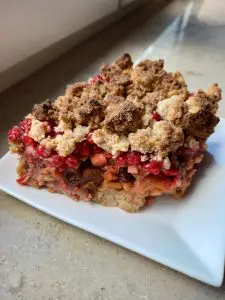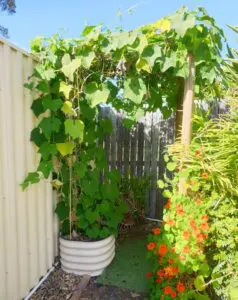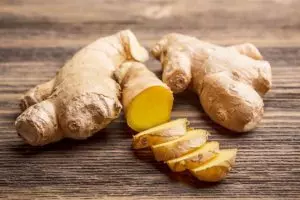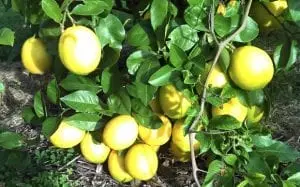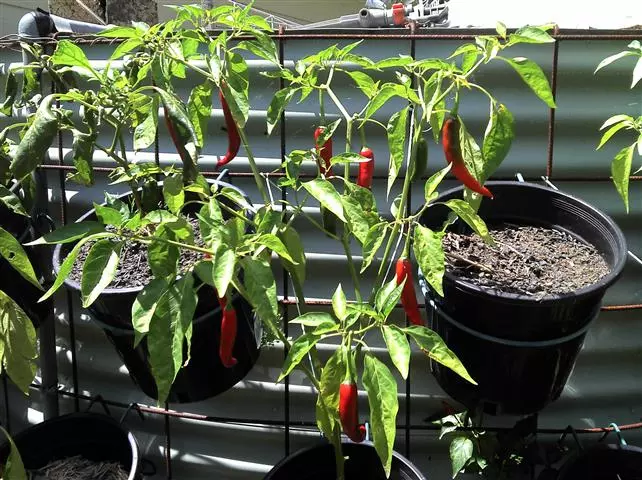 When I first started adventuring into self sufficiency, in particular vegetable growing, I was extremely proud to have built my first vegetable patch – a square wooden sleeper style 2.4 x 2.4 metre raised box. My first few attempts at growing vegetables in this patch were encouraging but not terrific; however, after some trial and error this box quickly developed into an amazing flourishing greenery that grew inches by the day. Almost overnight, I became infected by the home-grown food bug.
When I first started adventuring into self sufficiency, in particular vegetable growing, I was extremely proud to have built my first vegetable patch – a square wooden sleeper style 2.4 x 2.4 metre raised box. My first few attempts at growing vegetables in this patch were encouraging but not terrific; however, after some trial and error this box quickly developed into an amazing flourishing greenery that grew inches by the day. Almost overnight, I became infected by the home-grown food bug.
Empire Building
With this success came limitations and the main limitation (for me) at the time (and to an extent still is) was room. I now had limited space and so much more vegetables and plants I wanted to try, at the same time, so what did I do? I built two more identical patches and I put in a trellis. A few months later, I built another raised sleeper bed but this time it was much longer (10 metres). After that, I still needed (wanted) more growing space so I purchased three colorbond 3 x 1.5 metre raised beds and gave them a try. I then decided to build another trellis (but I made it a double trellis this time).
You would have thought I'd had enough of creating growing space; unfortunately, the raised beds as good as they were had other limitations, height for example, taller crops like corn were inappropriate for higher beds so I ended up tilling the ground further down the hill and made several furrows at ground level. And, so far I haven't added any more although I am considering another trellis…
What if space is limited?
Luckily (for me), yard space isn't really a problem at my place but what if space is limited? Well don't let a lack of space discourage you from growing your own fruit and vegetables because as long as you can find a spot receiving a minimum of 6 hours sunlight a day you're in business. Also, you don't have to be an obsessed, nutter, vegetable patch empire builder like me to be a success at growing your own. And, even if you do have plenty of room sometimes it's easier to look after a smaller plot rather then expand beyond what you can comfortably maintain. Plus, you may simply wish to create a feature in a small area for an effect rather then an expansion, or even plant to hide something ugly. For instance, growing hardy edible plants like chillies, herbs and strawberries on the sides of a water tank can be a productive way to turn a boring water storage container standing out like a shag on a rock into a growing, dual purpose garden feature. All that's required is a steel mesh of some kind or latticing hung or attached to the tank (or wall) and then you have a simple structure to hang your potted plants covering the area you want to hide. In a few months, your structure will be covered in colourful fruit and greens. A shag is a type of bird BTW.
What to plant in small spaces?
It's surprising how much food can be produced in relatively small areas especially if you are only feeding yourself or a few. I find I almost always produce more than I can immediately use and this is a good thing because there are always ways to take care of the excess. Preserving food is a great way to use an excess harvest, as is, selling, bartering, or giving away your surplus produce. But more to the point, you don't need a farm to produce a lot of food and a small plot can keep a small family seriously contributing to their diet for a long time. Leafy green crops like lettuce, spinach, silver-beet, rocket, and Asian greens are very nutritious, flourish in small spaces and last for ages (particularly if planted in a staggered manner sowing every few weeks). Furthermore, you eat the leaves so it's not like the plant takes up a lot of wasted space in waiting for the fruit. Also, these type of crops are so easy to grow that once you've done it you'll never pay 3 bucks for mixed greens in a plastic sealed bag from the supermarket ever again.
Some root crops are good for smaller areas too. Beetroot, for example, develops at a fair pace and not only is the root edible but the leaves are terrific in salads or when added to a stir-fry. Also, radish develops at warp speed maturing at 4-6 weeks with the root able to be picked and used when young as crunchy snacks. Spring onions grow fast too and can be used in bulk as a substitute to bulb onions or picked young for a flavour adder in many recipes hot or cold.
Containers
Other ways to grow in smaller areas are growing bags and mini raised quick assemble/disassemble garden beds. These techniques are becoming popular due to the portability of the containers and the convenience for renters to move from home to home or even for those who need to 'sun-chase' around their yard throughout the seasons to ensure their plants get maximum sun. It's important not to limit yourself by the notion of old stereotype vegetable gardens from our grandparents era. Don't think 'it's big or nothing' meaning nothing because you live in a densely populated area, in an apartment, or with a small yard.
Conclusion
Experiment with what you have and enjoy vegetable growing on a smaller scale because it will make a dent in your grocery bill and the added satisfaction of growing your own is not to be underestimated.
Of course, if you do have plenty of room and you want to empire build your vegetable garden obsessively (like me) then fill your boots but just remember the more garden you have the more you dig!
Have you got some growing ideas for smaller spaces? We'd love to hear about them – you can comment below the blog and start a conversation on the subject if you like.
Thanks for reading and thanks for your support.
Look, and see the Earth through her eyes.
Mark (Editor SSM)

